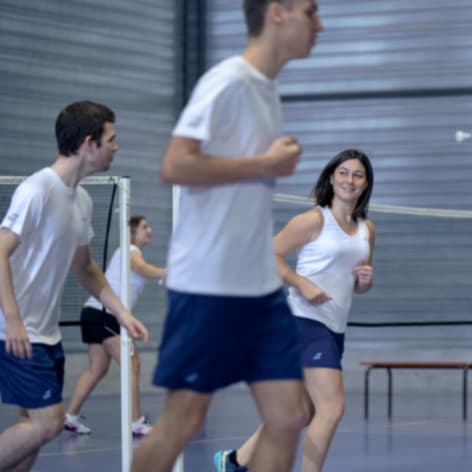In this specific article, Hongyan and Julie explain how important a core workout is to improve your game, and why this specific workout helps with the following:
- Avoid wasting energy, prevent injury
- Find a better balance in your movement
- Allow good transmission of forces between lower and upper body
This chapter looks at strengthening your abdominal muscles with a friend or practice partner.
A core workout helps strengthen the deep muscles in the abdominal region of your body, but also in your lower back and around your pelvis. This is where your centre of gravity is located and where all movements begin.
Why should you work on your core muscles?
While all top athletes use core workout on a very regular basis, it is often left out by leisure or younger players. But these muscles can help you in many aspects of the game, whether it is endurance, balance or stability.
On a badminton court, it will enhance precision and your ability to perform good rear court shots as well as giving better control of your footwork when you move towards the net or laterally. And when you are late to reach for a shuttlecock, the muscles you are about to work on will definitely help you get back into the rally faster.
Last but not least, building core muscles will definitely help you avoid the most common injuries in badminton: back injuries, knee and shoulder tendinitis.
How to work efficiently on your core muscles to improve your game?
Go step by step. We’ll share here some exercises that you can easily do with a partner, at home, in a gym or outside, in a fun way. Let’s get to it!
Exercise 1:
In a safe place, engage your core and stand on one foot. Then carefully close your eyes. If your balance is adequate, try to hold this position for 20 seconds without tipping over (30 sec or 40 sec for advanced). Do the same exercise with someone giving a small push in different parts of your body (shoulder, back, etc). The idea is to keep your balance.
Exercise 2: Start like exercise 1, then raise your other knee to 90 degrees. Try to make your partner lose balance with one hand, pushing (gently) on their upper body.
Exercise 3:
Get your partner to hold your ankles and make you walk on your hands, like you are a wheelbarrow. The partner lifts up the legs to create a plank position and starts walking forward. Distance: 5 metres / 10 metres / 15 metres depending on level.
Exercise 4:
Sit on a floor mat, and try to find a balanced position, with your feet not touching the ground. Grab a medicine ball if you have one, or any ball if you don’t. Touch the ground on the right side, then the left side, then throw the ball to your partner, standing in front of you, who will throw the ball back to you, while still in a balanced position. Repeat the exercise for 20 sec / 30 sec or 45 sec depending on your level.
Exercise 5:
Sit on the floor mat, with your feet touching the floor, legs flexed. Your partner, standing in front of you, throws the ball / medicine ball above your head. The idea is to catch the ball while leaning backwards at a slow pace, controlling the speed on the way down, and then, bouncing back up in a more dynamic way and higher pace to throw the ball back to your partner. Repeat the exercise for 20 sec / 30 sec or 45 sec depending on your level.
Exercise 6:
Do the plank together with your partner, facing each other. You can “high five” your partner twice with the same hand, then swap to the other hand, then repeat the same gesture, for 20 sec / 30 sec / 40 sec depending on your level. You can also add a bit of fun to this by playing the game “rock paper scissors” for the same amount of time, switching hand every 2 times.
Hongyan’s tip:
It’s very important to breathe well during all these exercises. In and out, deeply and regularly. Also, during all these, brace your core, keep your stomach in and contract your pelvic muscles at all times. Once I started using this tip (quite late in my career), I realised that my core workout was much more efficient.
Julie’s tip:
The position of the body is essential in these exercises. The purpose is to work on all abdominal muscles to give extra strength to your trunk. There should not be any pain during any of these exercises. You might feel tired, experience shaking or get hot. That’s OK. But if you feel pain, it means you’re doing the exercise wrong.







